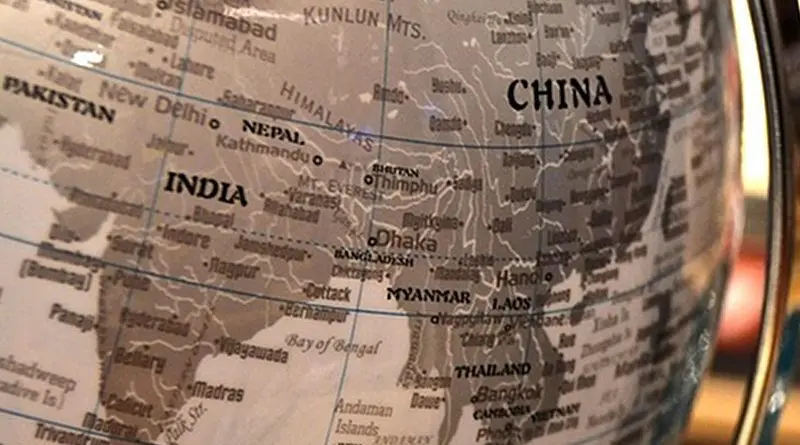China Slams Terrorism, But Not Pakistan: Sino-India Economic Relations Unlikely To Deteriorate – Analysis
China slammed terrorism in the RIC (Russia, India, China) communique in Beijing, in the post India’s airstrike on terrorist camps in Pakistan. Its Foreign Minister Wang Yi was emphatic in saying, it was “especially important to eradicate the breeding grounds of terrorism” . But, at the same time he refrained from castigating Pakistan. He said that ”Pakistan has always been opposed to terrorism”. This exhibits China’s double face against Pakistan, even though Pakistan is recognized the global breeding centre of terrorism. To the surprise, China urges two nations to remain restrain from escalating the war tension.
For the first time China made a balancing tact between India and Pakistan. India and Pakistan were engaged in several face-off and physical wars. All the time, China raised outcry against India.
What does this infer? It appears to be China’s targeting to outreach political gain or nab India’s big market through strategic economic partnership to set off the losses born out from US –China trade war. India is not party to China’s BRI initiatives, which would have leveraged China’s economic gain almost automatically.
The US – China trade war has already dumped China’s exports, bringing a collateral damage to its export base economic growth. China’s export dropped after Trump administration rang warning bell for high tariff barriers on US $ 200 billion exports from China. GDP growth hangs on a continuous downswing and is expected to aggravate , when high tariff barrier will actually be imposed. Its GDP growth slashed to 6.4 percent in 2018. The giant manufacturing regions, like Guangdom, Foshan and Dongguam are feeling the heat of deceleration and trade tensions with USA triggering trade tiff.
To this end, India – the only country in the world , which walks steadily on the high growth trajectory of GDP- can unleash opportunity to China to bottom out its downswing growth and reverberate the economy. Hence , China’s economic interests overrode its castigation against India.
The volta-face of China in the post trade war depicts that China is more keen to vie India’s heart than India needs. A new synergy is born. Both India and China oscillate in the hope for warming the relation. Till the trade tussle, India was keen to improve the relation with China. But, China was reticent. After trade war, China bent towards India and vies for India’s heart for improving economic ties. Global Times – the Chinese official media – quipped that “ a new day has dawned for the two countries, which were once at odds”.
China extolled India’s potential as an important destination for investment. “India has an wealth of experiences in utilizing international capital. There is no doubt it has become more attractive to foreign investors”, according to Mr Zjao Gancheng, Director of Centre for Asia Pacific Studies at Shanghai Institute of International Studies. India emerges a popular alternative for investment, among four nations including Vietnam, Cambodia and Philippines, according to a survey by American China Chamber of Commerce.
Chinese investors see India as the benchmark destination for overseas investment. . According to Mr Liu Xiaoxue, an associate researcher fellow of Chinese Academic of Social Studiess’ National Institute of International strategy, “Chinese investors see the country (India) as a benchmark destination , where development in many industries is moving at or near to the same pace as in China”
As of the end of 2017, Chinese Ministry of Commerce recorded Chinese investment in India more than US $ 8 billion. Start-ups, infrastructure and electronic manufacturing have become the key areas for Chinese investment.
China has already made a big investment in mobile telephone manufacturing in India. China brands now account for over 51 percent of the smart phones sales in India. Large penetration of Chinese top brands of smartphones, like Xiaomi, Oppo, One-plus, Gionee, Vivo, Huwai are posing challenges to Koreans and Japanese brands.
China agreed to increase import of agricultural products from India, which hitherto were imported from USA. Soybean is a case in point. China reduced import tariff on soybean meal from India to encourage exports. It is unlikely that 90 days truce between USA and China will reach détente. The prevailing trade war will harbor for China’s dependence on India’s agricultural products.
RCEP – the biggest trade block comprising of ASEAN plus six countries – received a new lease of life after the trade war broke. Needless to say, RCEP went dull after missing two target dates of launching. China was hurrying to conclude the deal. India , the biggest market in the trade block, can pose deterrent since its service trade is not included. Also, India is afraid of China’s backdoor entry through RCEP.
Against this backdrop, where China is squandered by trade war and India being the major savior, China’s earlier stand against India may bring a collateral damage to its economy.
Views expressed are personal

